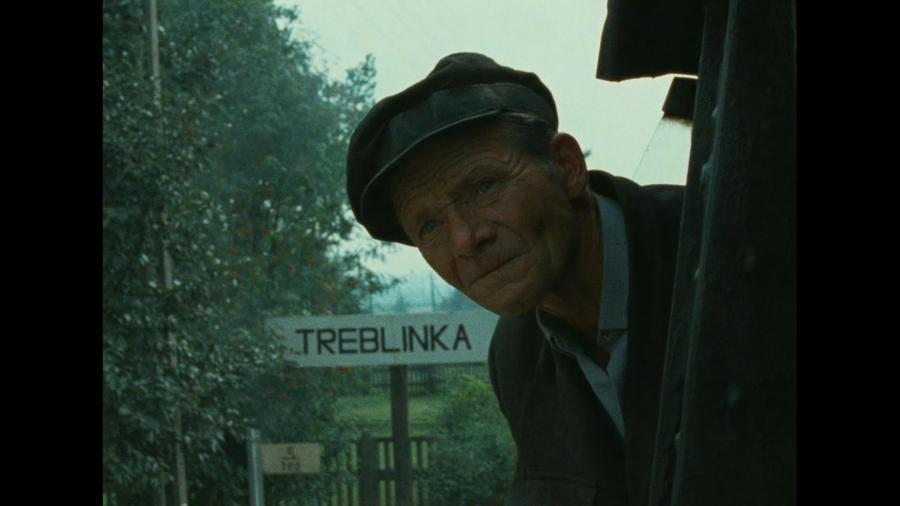Claude Lanzmann’s monumental documentary, Shoah, which marks its 40th anniversary this year, continues to elicit strong reactions, revealing the intricate complexities of Holocaust representation. Spanning nine-and-a-half hours, the film captures profound testimonies and haunting imagery that challenge viewers to confront the depths of human suffering.
In his memoir, The Patagonian Hare, Lanzmann recounts a revealing dinner with Jean-Marie Lustiger, a Jewish man who converted to Catholicism and served as the Cardinal Archbishop of Paris. The archbishop’s residence, filled with copies of Shoah, served as a stark backdrop to an unsettling truth: despite the visible urgency, Lustiger had only managed to watch brief segments of the film. His admission, “I can’t do it, I just can’t,” highlights the emotional weight that Lanzmann’s work carries, even for those intimately connected to its subject matter.
Lanzmann’s journey to create Shoah was not merely cinematic; it was deeply personal. The filmmaker, who experienced the horrors of World War II as a child in occupied France, dedicated twelve years to exploring the Holocaust’s legacy. His commitment is evident as he sought to recover the lost narratives of victims and witnesses. He once remarked, “My homeland is my film,” reflecting the profound connection between his identity and the stories he sought to tell.
Unearthing Testimonies and Confronting Silence
The documentary’s structure allows for a unique exploration of silence, a theme that resonates throughout its lengthy runtime. Lanzmann understood that the absence of voices from within the gas chambers posed a significant challenge. He stated, “I knew that the subject of the film would be death itself, death rather than survival.” This understanding shaped the film’s ethos, compelling his audience to fill the silence with their reflections and emotions.
In his quest for testimony, Lanzmann encountered individuals such as Abraham Bomba, who gave harrowing accounts of cutting the hair of women in Treblinka’s gas chambers. He also spoke with survivors like Rudolf Vrba, who escaped Auschwitz, and Szymon Srebrnik, a young boy forced to sing for the SS at Chelmo. Each encounter added layers to the documentary’s exploration of trauma, memory, and absence.
Lanzmann’s decision to travel to Poland further underscored his commitment to uncovering the truth. Initially hesitant, he later declared, “Treblinka existed!” This revelation came as he engaged with witnesses and perpetrators alike, capturing chilling testimonies from those who played roles in the Holocaust. One notable encounter was with Henrik Gawkowski, who drove trains carrying Jews to Treblinka. Lanzmann’s respectful approach to these conversations highlights the complex dynamics of guilt and memory.
The Impact of “Shoah” and Its Legacy
The documentary’s gripping visual style, coupled with Lanzmann’s relentless pursuit of truth, creates a powerful viewing experience. His camera, often likened to a moving prayer, continuously captures the remnants of a world that was lost. The images of Polish landscapes, once alive with Jewish communities, now serve as poignant reminders of what was taken away.
Lanzmann’s willingness to confront perpetrators, such as former SS officer Josef Oberhauser, adds another layer of complexity to Shoah. In a memorable scene, Lanzmann interviews Oberhauser while he serves drinks in a Munich restaurant. The tension between the two men, underscored by the reactions of those nearby, encapsulates the film’s exploration of complicity and the burden of memory.
As audiences reflect on Shoah, they are left with the profound realization that engaging with such history is not merely a passive act. The documentary demands active participation, challenging viewers to confront their own understanding of the Holocaust and its implications for humanity today. Lanzmann’s work remains a crucial part of Holocaust culture, embodying both the weight of the past and the urgency of remembrance.
Ultimately, Shoah serves as a testament to the enduring impact of personal narratives in the face of collective trauma. As Lanzmann himself expressed, the film is not just about the events of the past; it is a call to remember, to reflect, and to acknowledge the silence that often accompanies such profound loss.
